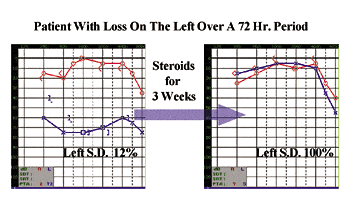ABC/AFP
US researchers have used gene therapy to regrow the tiny hairs in the inner ear of mice, which they say might lead to new ways of restoring hearing loss in humans.
John Brigande, PhD, and colleagues at Oregon Health and Science University report their findings in Nature.
Sensory hair cells inside the cochlea, the auditory portion of the inner ear, convert sound waves into electrical impulses that are delivered to the brain.
The loss of these minute hairs—or the nerves that control them—is the most common cause of hearing impairment and so-called nerve deafness.
At birth, humans have about 30,000 hair cells, which can be damaged by infections, ageing, genetic diseases, loud noise, or treatment with certain drugs.
In most cases, damaged hair cells do not regrow in mature humans.
Brigande and colleagues introduced a gene known as Atoh1 into the inner ear of a normal-hearing mouse embryo while it was still in the mother’s womb and coaxed non-sensory cells to become hair cells.
"One approach to restore auditory function is to replace defective cells with healthy new cells," Brigande says. "Our work shows that it is possible to produce functional auditory hair cells in the mammalian cochlea.
"It remains to be determined whether gene transfer into a deaf mouse will lead to the production of healthy cells that enable hearing," he said. "However, we have made an important step toward defining an approach that may lead to therapeutic intervention for hearing loss."
While gene therapy is still highly experimental in people, Brigande and team say their research may lead to other ways to treat deafness.
Rachael Richardson, PhD, of the Bionic Ear Institute in Melbourne characterized the research in a mouse embryo as exciting.
"The implications are that this could treat congenital forms of hearing loss in humans," she says.
But transferring it to a deaf mouse model will bring challenges, Richardson added.
She says the researchers developed the new hairs from "supporting" cells that normally have a structural function. But when deafness occurs, these supporting cells disappear.
This means, the gene therapy would have to be done very early on before the supporting cells are gone, she says.
[Source: ABC Science]



